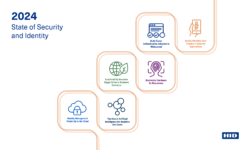WiFi Routers, Smart Home Hubs Increase Dependence on Connectivity, Survey Says
A newly released three-part survey highlights consumer technology dependence, the growth of the connected home and smart home security concerns.

ST. PETERSBURG, Fla. — Which technology do adults in the United States say they cannot live without for more than one day? Smartphones, you say? Nice guess, but no. WiFi routers take the top spot, according to a new study released by iQor, a business process outsourcing company.
As the life-blood for the connected ecosystem, a functioning WiFi router is necessary for consumers to enjoy smart devices and the connected lifestyle, including smart TVs and streaming devices, multiplayer gaming, tablets, voice controlled virtual assistants and smart speakers, telehealth devices and IoT-enabled security systems, according to iQor.
Currently, nearly two-thirds of U.S. adults (64%) couldn’t be without WiFi for more than one day, the company released as part of its Customer and Product Experience 360 (CPX 360) Survey.
As the smart home market and diversity of connected devices continues to grow, dependence on WiFi routers and smart home hubs will continue to intensify. The proliferation of smart devices is forecast to reach 20.4 billion globally by 2020, almost doubling from an estimated 11.1 billion in 2018, iQor cites in an announcement.
“The fact that the WiFi-connected smart home is the most important technology consumers don’t want to be without — over the smartphone — is a shift that technology experts and brands must understand and plan for, because this is a relatively new market and consumer adoption is not yet mainstream,” says Autumn Braswell, COO, LinQ Integrated Solution at iQor. “Currently, there is no clear brand owning the connected home customer experience. We believe that whoever can help consumers fully realize the potential of the connected home reality — and connect multiple devices for maximum impact, security and efficiency — will emerge as the brand leader five years from now.”
IoT Security Top of Mind for Consumers
At the same time, as increased adoption of multiple smart home devices and appliances has heightened dependence on connectivity in the home, the CPX 360 survey also revealed other smart home-related concerns.
As the smart home grows in popularity, IoT security concerns remain top of mind for consumers. The CPX 360 survey reports that more than two-thirds (70%) of consumers are concerned about the lack of security from hackers who might hack into smart devices in the home; these apprehensions escalate among older generations, as nearly four out of five baby boomers (79%) are fearful of hackers breaching a smart connected device in their home.
Data and privacy fears rank second among consumer smart home concerns. More than half of U.S. adults (58%) fear lack of privacy from device manufacturers who have access to data, real-time conversations, voice patterns and search history. These security concerns are a potential barrier for mass consumer connected home adoption.
“Consumer concerns about data privacy and security, including both the unauthorized hacking of devices and theft of device data, consistently rank as one of the leading concerns about connecting devices to the Internet,” says Brad Russell, research director for connected home, Parks Associates. “Companies are working to adopt best practices for IoT data security and management to allay concerns and deliver peace of mind, including more stringent efforts to secure the home network by deep inspection of incoming and outgoing traffic and monitoring of edge devices to alert for anomalous behavior.”
Consumers Fear ‘Cascade Effect’ Among Connected Devices
The promise of the connected ecosystem is that multiple devices will work in harmony to share information and simplify tasks. However, the CPX 360 survey reports that consumers are afraid of the “cascade effect” in the smart home ecosystem. More than half of consumers (54%) fear that if one devices fails it will cause other connected devices in the home to fail.
This is especially troubling to the consumers because they are already having problems connecting smart devices to the internet, configuring settings and interacting with other devices. Overall, in the past two years, 63% of survey respondents had set up issues and 48% had operation issues. Connecting the device to interact with other devices was difficult for nearly one third of consumers (31%).
“The connected home contains multiple devices, from a variety of device manufacturers, that are all supposed to work together in harmony. When an issue arises, consumers often do not know how to identify where the issue resides: with connectivity to the internet, with the device itself or with a different device it is connected to,” says Braswell. “This gray area causes confusion with both the customer, as well as customer service departments for various device brands. The fear of the ‘cascade effect’ is real if consumers are already having smart home connectivity, set-up or operation issues.”
Brands can offset issues increasing the “cascade effect” in the connected home by educating consumers and retooling product delivery and customer support methods.
“The smart home and connected ecosystem is designed to transform consumers’ lives by simplifying tasks and providing an added layer of intelligence to devices with actionable insights for the consumer,” says Hartmut Liebel, CEO of iQor. “Consumers will adopt and try a number of different devices and those that enhance their lives and work seamlessly will secure a permanent place in the connected home. The ability to easily operate these connected devices and services, and to readily obtain customer support when needed, will be the crucial factor in adoption. Brands need to expand proactive engagement efforts and simplify products to minimize set-up frustration and directly address consumer concerns around privacy and security.”
Consumers Worried IoT Could Lead to Increased Tech Dependence
The increased value of the WiFi router speaks to the growing adoption of the smart home lifestyle and the desire for the convenience that the connected ecosystem provides, but consumers have reservations about IoT creating an unhealthy dependence on technology, according to iQor. More than half of surveyed adults (53%) are concerned that IoT and smart devices will lead to a heightened dependence on technology to conduct daily tasks.
The CPX 360 survey reports that more than 90% of consumer households today have a smartphone and that new connected technology is rapidly being adopted. Almost half of consumer households (42%) have a smart TV, nearly one in four have a health wearable device, like a Fitbit, and 16% have a voice controlled virtual assistant, like Alexa or Google home.
If you enjoyed this article and want to receive more valuable industry content like this, click here to sign up for our FREE digital newsletters!

Security Is Our Business, Too
For professionals who recommend, buy and install all types of electronic security equipment, a free subscription to Commercial Integrator + Security Sales & Integration is like having a consultant on call. You’ll find an ideal balance of technology and business coverage, with installation tips and techniques for products and updates on how to add to your bottom line.
A FREE subscription to the top resource for security and integration industry will prove to be invaluable.














As devices increase, interoperability is the largest barrier standing in the way of a truly smart home. Lynx Technology and the Open Connectivity Foundation have tackled these issues and established a standard that eliminates manufacturer barriers.
Lynx MiND it is protocol agnostic, which allows your customers to securely discover Zigbee, Z-Wave, Thread, DLNA and other smart devices* in the consumer’s home, and to ensure interoperability with these devices from one central hub using a companion app.